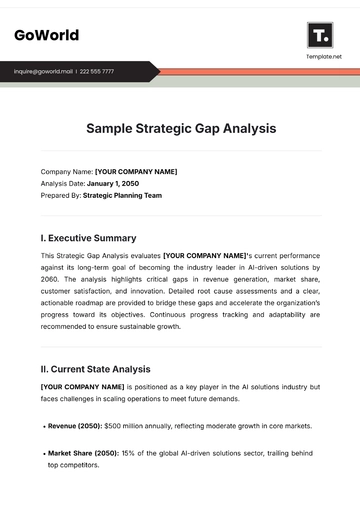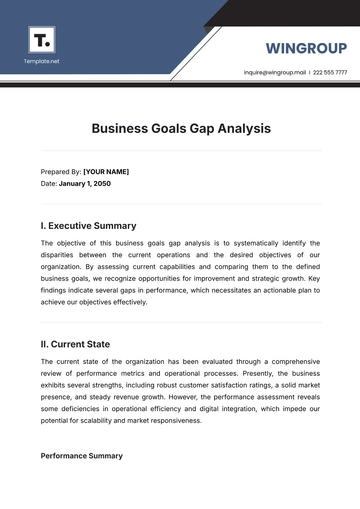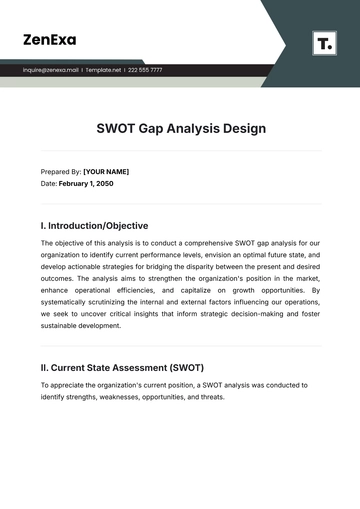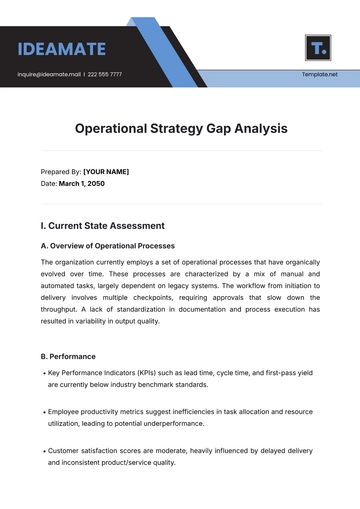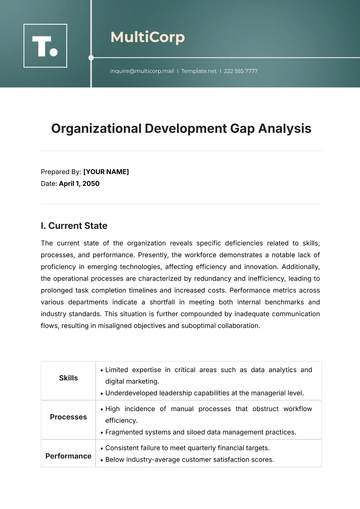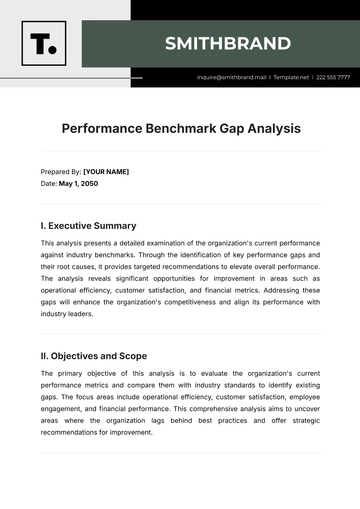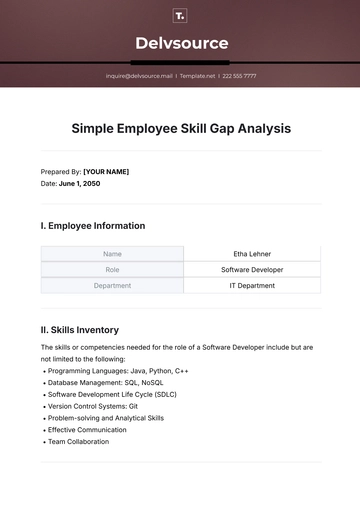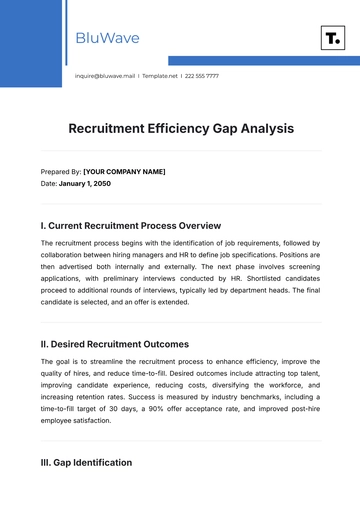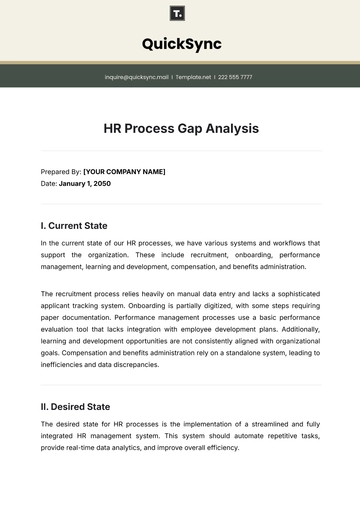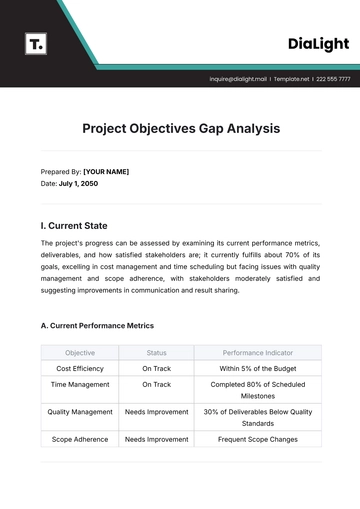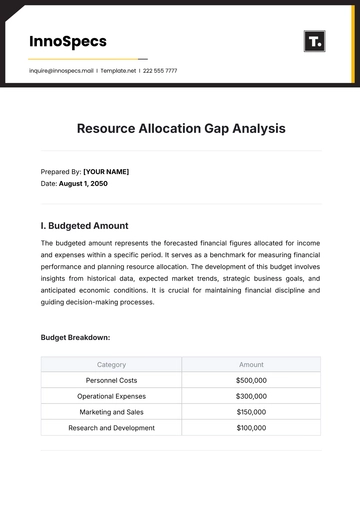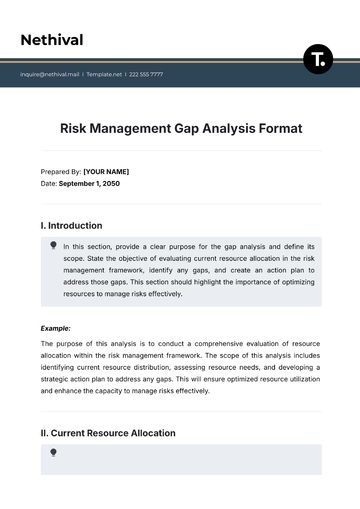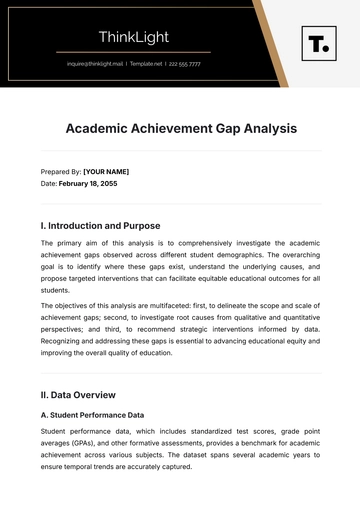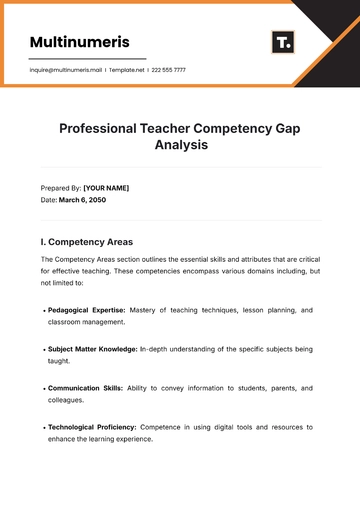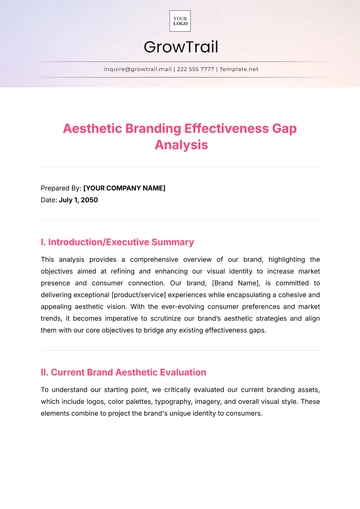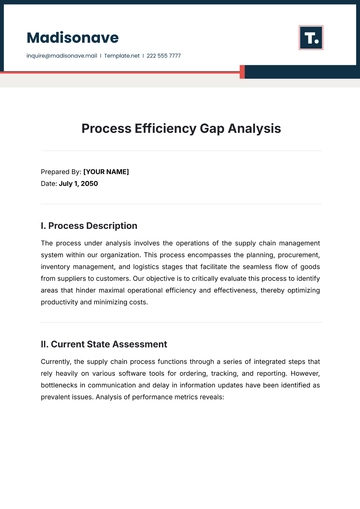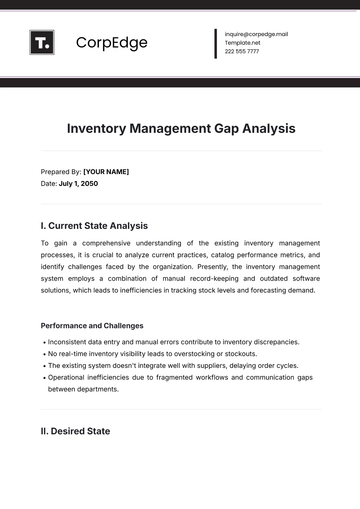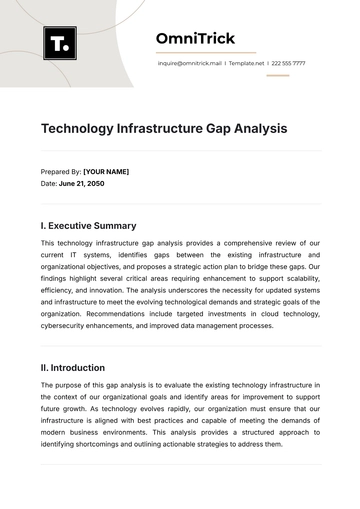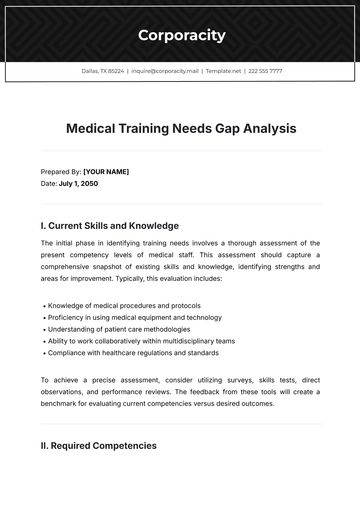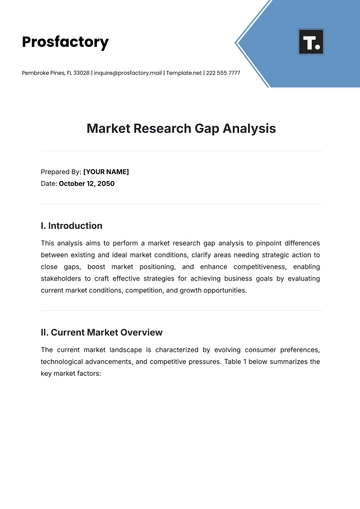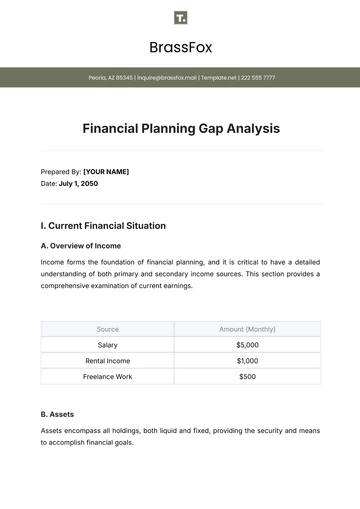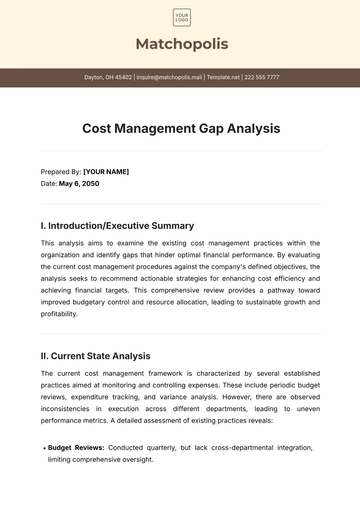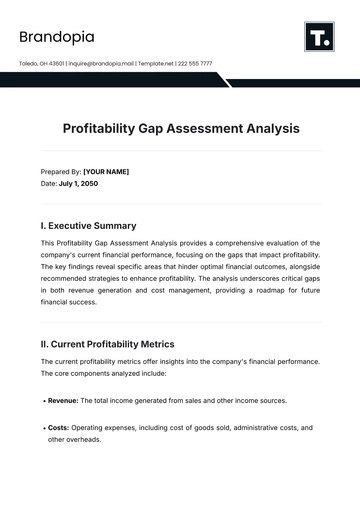Free Sales Funnel Analysis

Prepared by: | [YOUR NAME] |
Company Name: | [YOUR COMPANY NAME] |
Introduction
In the dynamic landscape of sales and marketing, understanding the customer journey is paramount. The Sales Funnel Analysis provides a structured approach to decode this journey, from initial awareness to the final purchase decision. At [Your Company Name], we aim to optimize every touchpoint, ensuring we connect meaningfully with potential clients and drive conversions.
This document serves as a comprehensive guide for marketing professionals to analyze, evaluate, and refine our sales processes.
Awareness Stage
The Awareness Stage marks the beginning of a potential customer's journey with [Your Company Name]. It's when they first become cognizant of our brand and offerings, typically through various marketing channels and campaigns.
Marketing Channels
Digital Presence: Utilize your website and your social media platforms to create targeted content, ensuring our brand is prominently visible to the right audience.
Traditional Media: Engage in press releases, TV spots, and print media advertisements, catering to our broader demographic.
Events and Workshops: Host or participate in industry-relevant events to enhance brand visibility and foster initial engagement.
Key Metrics
Monitor the reach and impressions of our campaigns.
Track website visits originating from marketing efforts, and assess the growth rate of your social media followers.
Strategies for Enhancement
Engage in collaborative ventures with influencers or industry leaders.
Invest in SEO and SEM to increase visibility on search engines.
Regularly update and refresh marketing content to remain relevant and engaging.
Interest Stage
After gaining initial awareness, potential customers transition to the Interest Stage. Here, they seek more information about our offerings and begin to consider how [Your Company Name] aligns with their needs.
Content Strategy
Educational Materials: Develop blogs, webinars, and e-books that delve deeper into our products/services, showcasing their benefits.
Engagement on Your Social Media: Regularly post user testimonials, product demonstrations, and behind-the-scenes content to cultivate interest.
Key Metrics
Evaluate metrics like content engagement rates, duration of website visits, and interactions on your social media.
Track the number of inquiries or sign-ups resulting from interest-driven content.
Strategies for Enhancement
Introduce interactive elements like quizzes or polls to engage potential customers.
Host Q&A sessions on your social media to address queries and foster a sense of community.
Evaluation Stage
At the Evaluation Stage, potential customers actively compare [Your Company Name]'s offerings with competitors. They assess features, benefits, and overall value to determine the best fit for their needs.
Comparative Tools
Feature Breakdown: Offer detailed comparison charts on [Your Company Website], highlighting the unique selling points of our products/services.
Customer Testimonials: Showcase real-world feedback and success stories, emphasizing our edge over competitors.
Key Metrics
Monitor the frequency of visits to our comparison pages, the time spent on these pages, and the click-through rate to product pages.
Track the volume and sentiment of feedback and inquiries.
Strategies for Enhancement
Provide interactive demos or trials, allowing customers to experience our offerings firsthand.
Organize webinars or live sessions addressing common concerns and showcasing the practical advantages of choosing [Your Company Name].
Desire Stage
In this stage, potential customers have moved beyond mere interest and are now cultivating a genuine desire for [Your Company Name]'s products or services. They envision the benefits and consider committing.
Engaging Content
Benefit Showcases: Use your website and social media to display the transformative effects of our offerings through case studies and success stories.
Exclusive Previews: Offer sneak peeks or early access to new products or features, heightening the anticipation.
Key Metrics
Gauge the effectiveness of desire-driven content by monitoring engagement rates, shares, and positive feedback.
Track the increase in wishlist additions or pre-order sign-ups.
Strategies for Enhancement
Introduce limited-time promotions or exclusive bundles to spur action.
Engage with potential customers directly through personalized email campaigns, nudging them toward the final purchase decision.
Intent Stage
This stage signifies a pivotal point in the customer's journey with [Your Company Name]. Here, potential customers display clear buying signals, showcasing their readiness to move towards a purchase.
Points of Engagement
Shopping Cart Activity: Monitor additions to shopping carts or saved product lists on your company website.
Product Queries: Track inquiries about product availability, pricing, or purchase options, indicating a strong buying intent.
Key Metrics
Assess the number of cart additions, product page revisits, and sign-ups for purchase-related notifications.
Measure the rate of cart abandonment to identify potential hurdles.
Strategies for Enhancement
Implement cart recovery strategies like reminder emails or targeted discounts.
Offer live chat support or FAQ sections to address last-minute questions.
Enhance the checkout process to be more user-friendly, minimizing friction points.
Purchase Stage
The Purchase Stage is the culmination of the customer's journey with [Your Company Name]. It's where intentions transform into actions, resulting in a successful sale.
Seamless Transactions
Secure Checkout: Ensure your website offers a safe, encrypted transaction process to instill confidence.
Multiple Payment Options: Cater to diverse customer preferences by providing varied payment methods.
Key Metrics
Track the overall conversion rate, average order value, and frequency of repeat purchases.
Monitor any instances of transaction failures or last-minute cart abandonments.
Strategies for Enhancement
Introduce loyalty points or immediate post-purchase discounts to incentivize future engagements.
Offer real-time support during the checkout process to address any hesitations.
Send timely confirmations and thank-you messages post-purchase, reinforcing the customer's decision.
Post-Purchase Behavior Stage
Once a purchase is sealed, [Your Company Name] recognizes that a customer's journey doesn't end. Their post-purchase experience often dictates future engagements and brand loyalty.
Touchpoints of Engagement
Feedback Portals: On [Your Company Website], customers can share their product experiences, providing us with invaluable insights.
Usage Analytics: Through product telemetry, we grasp how customers interact with our offerings, helping refine future iterations.
Metrics of Interest
Keep a close watch on product return rates, support ticket frequencies, and positive versus negative feedback ratios. These indicators shape our post-sale strategy.
Nurturing the Relationship
Launch targeted email campaigns offering tips on maximizing product benefits.
Schedule periodic check-ins or surveys to gauge satisfaction and gather suggestions.
Loyalty Stage
The journey with the customers at [Your Company Name] doesn't conclude post-purchase. The Loyalty Stage underscores our commitment to nurturing long-term relationships and ensuring continued customer satisfaction.
Loyalty Initiatives
Rewards Program: On your website, customers can accumulate points with every purchase, redeemable for exclusive benefits and discounts.
Members-Only Events: Loyal patrons are granted early access to product launches and exclusive events, celebrating their continued association with our brand.
Key Metrics
It's crucial to track metrics such as repeat purchase rates, engagement with loyalty campaigns, and the active participation of members in exclusive offerings to refine our loyalty strategies.
Strategies for Enhancement
Engage in regular feedback sessions and surveys to understand evolving customer needs.
Enhance the rewards program based on feedback and market trends to ensure it remains enticing.
Advocacy Stage
The Advocacy Stage is a testament to the strength and quality of [Your Company Name]'s relationship with its customers. It's when satisfied customers become brand ambassadors, voluntarily promoting our offerings based on their positive experiences.
Channels of Advocacy
Referral Programs: Through your website, loyal customers can refer friends and family, earning rewards for bringing in new clientele.
Testimonial Solicitation: Encourage satisfied customers to share their stories and experiences, which can be showcased on your website and your social media.
Key Metrics
Measure the success of advocacy by tracking referral rates, the volume of positive testimonials, and the increase in organic mentions on social media platforms and review sites.
Strategies for Enhancement
Offer exclusive benefits or rewards for top advocates.
Organize appreciation events or campaigns to recognize and celebrate the contributions of brand advocates.
Drop-offs and Leaks
In the intricate landscape of sales and customer engagement, understanding drop-offs and leaks within our sales funnel becomes crucial for [Your Company Name]. These instances are more than just numbers; they represent potential touchpoints where customers might be facing challenges or uncertainties. By keeping a vigilant eye on user activity on your website, we can pinpoint the stages or elements that might be causing hesitations or second thoughts.
Key metrics that shed light on these areas include cart abandonment rates, specific page bounce rates, and drop-offs during integral processes like sign-ups or checkouts. Addressing these concerns goes beyond mere troubleshooting—it's about enhancing the user experience at every step. Implementing robust feedback mechanisms and continuously refining the user interface based on these insights is our way forward.
Recommendations and Action Plan
This section outlines the strategic recommendations and subsequent action plan for [Your Company Name], derived from our in-depth sales funnel analysis. It provides a roadmap to address identified challenges, ensuring we continually enhance our customer experience and drive conversion.
Key Recommendations | Action Plan |
|---|---|
Enhanced User Interface Focus on refining the user experience on your website, especially during critical touch points like the checkout process, to decrease cart abandonment rates. | Website UX Audit Initiate a comprehensive review of your website to identify and address potential user experience pitfalls. |
Robust Feedback Mechanism Incorporate a dynamic feedback system, allowing customers to share real-time concerns and feedback, facilitating quicker issue resolution. | Feedback System Integration Collaborate with the tech team to seamlessly integrate the new feedback mechanism, ensuring it's user-friendly and efficient. |
Collaborative Sessions Schedule regular brainstorming sessions with marketing and tech departments to ensure alignment and effective implementation of recommendations. | |
Progress Review Set up a monthly review mechanism to evaluate the success of implemented strategies and recalibrate if necessary. |
- 100% Customizable, free editor
- Access 1 Million+ Templates, photo’s & graphics
- Download or share as a template
- Click and replace photos, graphics, text, backgrounds
- Resize, crop, AI write & more
- Access advanced editor
Enhance your sales strategy with the Sales Funnel Analysis Template available on Template.net. This comprehensive tool empowers businesses to analyze and optimize their sales funnels effectively. Customizable, downloadable, and printable, it offers flexibility and convenience in adapting to your needs. Editable in our AI Editor Tool, this template ensures seamless updates and modifications.

